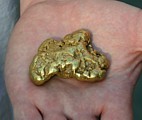
.

|
|
 |
||
|
. |
Interested in hard rock gold and silver ores and how they are processed? Most of the gold and silver produced comes from the processing of hard rock ores. There are a lot of different options for processing ores, and in the article below I'll take a look at all of the best known possibilities for getting the gold and silver out of your ore and producing a clean gold and silver bullion product. Cyanide is used to capture the very small sized gold and we don't want to throw the fine gold away as it can be valuable. Take a look at the following basic information on mining....... |
 |
|
Hard rock mining is usually done on a
large scale, and although a few small-scale hard rock operations still exist, it’s
not an easy operation to start up and run profitably. The main problem for individuals or
small groups interested in hard rock gold deposits is the high capital costs both for the
mining equipment to dig and remove the rock as well as the equipment to crush and process
hard rock ore in order to extract the gold from its solid rock enclosure. Because of this,
many prospectors who look for hard rock gold seek instead to sell their finds to large
companies that possess the resources to develop them. In this day, it is a lot harder for the individual operator to get involved in hard rock mining. This type of metal mining is a lot tougher than it used to be for several reasons, including modern environmental and other restrictions and perhaps even more importantly, far fewer opportunities to sell or process your rock. There was a time 60 or 80 years ago, smelters would buy small lots of high-grade ores, and there were small custom mills across the west that would process the ores, paying the miner for the metals produced. At the present time, I know of no smelter that will accept small lots and there are very few custom mills still left and the equipment at some of them is questionable at best. The issue for a would-be hard rock metal miner then becomes what would you do with your ores? Small scale heap leaching is a possibility – it is a process that is worth considering. Many prospectors would just like to know something about are hard rock prospecting and how to find gold veins as well as rich pocket deposits of high grade gold ore. Let's get started with the basic concepts behind hunting rich pockets of gold by tracing or as it's called in Australia, loaming. |
||
The first step in pocket hunting is to identify a gold bearing area that may have pockets – usually a smaller drainage in an area known to have produced coarse gold in the past. The goal is to find a drainage with a single gold source, or at least one dominant source that is contributing the majority of the gold - too many different sources contributing gold to the mix makes this method unworkable. The best places to look for residuals are on flat to moderate slopes, with limited vegetation, where coarse gold is known to be present that drain only a small area. The larger the drainage area, the more likely that multiple gold sources are contributing to the placer, and this makes finding any single one of them much harder. A great example of the right type of place to look might be in smaller drainages above old placer diggings. Information pointing out these kinds of areas can often be found in old geologic reports. The second step is to take samples along the drainage to determine the limits of the gold bearing area. In the past, this has been done by panning, but it is now possible to do much of the same work with a metal detector. Once the limits have been determined, the pocket hunter then takes some samples up the slope from the drainage to determine which side of the drainage the gold is coming from. If some gold is coming form both sides, the goal is to find one side that is the majority source and has much more gold than the other. If no significant difference is found in one side of the drainage or the other, it may well be that there are too many small sources contributing to easily identify any one source. If a single or dominant side of the drainage can be identified, the next step is to move up the slope of the hill taking samples to determine limits of the gold going up hill. Generally these are taken in a line parallel to the axis of the drainage being tested. Keeping in mind the typical triangular, fan shaped dispersion pattern for the gold, the prospector can trace the gold up slope. Good gold found within a few consecutive samples taken and panned, may indicate you are on the right track and within the downhill dispersion pattern of a residual gold pocket. Another line of sample is then taken further up hill to test the placer. The gold should become more abundant as the samples approach the residual placer “pocket” at the point of the triangle. These methods have remained unchanged for centuries and were described as used by the California gold rush 49ers by Mark Twain in his book “Roughing It”. A good example of where this type of technique might work is where you have found a good quantity of placer gold working up a small ravine and the gold suddenly drops off to nearly nothing. This is a strong indication that you should turn and look up the slope of the adjoining hillsides for the source – possibly a rich residual placer deposit. |
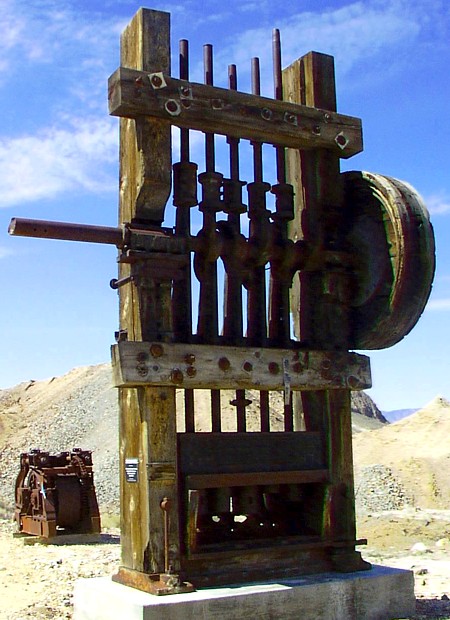 |
|
| Unfortunately, tracing (loaming) is limited in its opportunity – only certain types of residual placers can be worked by this method. The system works far better where one or two larger pockets are releasing a good number of gold pieces. Larger pockets of residual gold with a good number of nuggets are required to create the dispersion trace used to follow the gold back to its source. Small residual deposits with perhaps a dozen or so nuggets, don’t have the quantity of gold to create a good, strong trace. Multiple sources can also make the trace unclear – and this is a very common situation. The small veins that often give rise to coarse gold, commonly occur in zones or groups. When a large number of small veins are all releasing a small amount of gold, trying to find any single one of them is like trying to hear just one single voice when 50 people are screaming. In the same way that no single person can be heard in a scream fest, placers that have a large number of small sources cannot be traced by standard pocket hunting methods. If old timers have removed much of the gold – it may be hard to find where the gold deposits start and where they stop, as the clues have been taken away. Another frustrating situation can occur when the source has, for the most part, eroded away. There may still be something of a dispersion trace of gold left behind, but the big residual placer payoff at the origin point may be gone. These limitations are a big part of why the old timers had difficulty working residual placers. In spite of this, tracing does sometimes work, and prospectors in California, Australia and elsewhere have used it successfully. If you do find a rich pocket, you may be interested in methods to crush and extract the gold from you high grade rock. You can find my webpage on that topic at Hand Crushing Rich Ores | ||
If you have a rich quartz vein or other hard rock deposit, you may be interested in the mining methods used to mine and break the rock. Its hard to believe, but thousands of miles of underground tunnels were drilled and blasted by the old time miners using nothing more than hand steel and hammers, to manually drill their blast holes. Modern mining techniques use compressed air to power a device called a jackleg for drilling. The jackleg is adjustable for the angle of the holes in the speed that it drills. In addition, water can be added to help hold down the dust. The holes are drilled in an organized pattern which defines the opening the miners trying to create. Dynamite or other explosives such as ammonium nitrate, are added to the drill hole when the miner is ready to blast. A stope is the area in the mine where ore is removed. At times, when large bodies of ore are removed, enormous rooms are opened up, hence the European term for stope, which is gallery. When miners work from the top of an ore body downward, the method is called underhand stoping. When the miners work from the bottom upward, it is called overhand stoping. Overhand methods are much preferred as they allow the miner to use the force of gravity to assist them in moving the ore once it is broken by blasting. When working a vein, the part above the miner at the top of the opening is called the hanging wall or the back, the lower part below the miners feet is the footwall or sill. Stopes which begin at the surface and go downward are often called grass roots stopes. Historically, many old stopes are at least partly filled with waste rock as miners often dump waste rock from underground workings into the old, mined out stopes. This saves them the work of hauling the rock all the way to the surface and also helps to stabilize the walls of the stope. In some places, this old stope fill is now good ore at current metal prices, and may be well worth removing. |
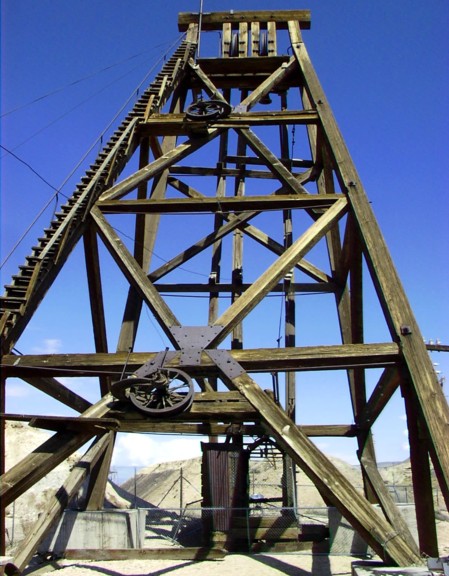 |
|
When ore is blasted out and removed, an underground void is created and because such voids are often unstable, some sort of support is usually required to prevent cave-ins. Depending on the strength of the ore and surrounding rock, and number of different techniques can be used to support the mine openings. These can range from simple wooden posts called stulls spanning short distances across a vein, to more complex systems such as square sets to support large openings. modern miners also use a device called a roof bolt, where a whole is drilled and anchored at the back of the whole and the plate applied to the bolt at its head. Another common method of wall support in stope areas is the use of support pillars, by leaving behind areas of the ore to support the backs above. Removing pillars is sometimes attempted to recover ores left behind by the old timers, but it can be highly dangerous to remove the supports, and may cause caving. |
||
There are a number of different haulage methods for transporting rock through a mine to the portal. The old timers commonly used rail and mining cars to move gold or silver ore and waste rock, and this method is still used in some smaller mines. Most modern mines however, use rubber tired diesel powered equipment to haul ore underground. In a well-designed system, broken rock from a stope will drop directly into the haulage equipment.For mines accessed through a shaft, the material must also be hoisted to the surface through the shaft. This usually means the material must be handled the second time to put it in the shaft's hoisting system, and then a third time to take it to the mill. |
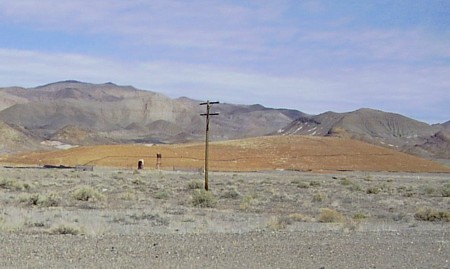 |
|
| Once the ore is brought up from the mine its first destination is most often some
sort of feed or surge bin. This bin allows the mill to take in ore at a constant feed
rate. Various crushing systems are used, usually starting with a coarse crushing with
something like a jaw or cones crusher, followed by a fine crushing using something like a
ball or Rod mill. After crushing, the extraction processes vary greatly, depending on the
metal or mineral to be extracted. However, since we are focusing on precious metals, we
will look at gold and silver extraction methods. Commonly used methods include the
following: Gravity Concentration methods are systems which use gold’s high density to capture the precious metal. Gravity based equipment includes jiggs, spirals, sluices and tables. Gravity systems are often the lowest cost system, but only a certain part of the gold is usually coarse enough to be recovered with gravity systems. It is common that gold ore be processed by two methods - gravity is used to remove the coarser gold from an ore and afterward the ore is processed by cyanide to recover the fine particles of gold and silver. Gravity concentration methods are the ones most commonly used by the individual prospector. |
|
|
| For more information on commercial gravity concentration
systems please take a look at my webpage upon Commercial
Placer Mining Equipment Ores which have significant sulfide content are usually then treated by a flotation process. In this method, a water-based slurry is created out of the finely crushed ore. An oil is added to the slurry and air bubbles are push through the mix as the slurry is kept stirred. Sulfides are not easily whetted and they are attracted to the air surfaces in the bubbles. The sulfide rich froth floats to the surface and is then scraped off the top of the slurry and moved on to another part of the facility for further processing. The exact processes which are to be used depend on what type of sulfides are present in the ore. In most gold ores, the final process to extract the tiniest gold particles is the use of cyanide to dissolve the gold. Cyanide, in the presence of oxygen actually dissolves both gold and silver. It is both efficient and inexpensive, so it is widely used in precious metal ore processing. Properly done, gravity concentration followed by flotation (where necessary) and then cyanide will recover between 95 and 98% of the gold in the ore as determined by fire assay. |
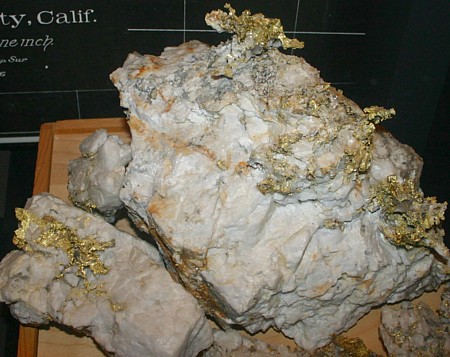 |
|
There are two main versions of the cyanide process, vat leaching and heap leaching. In vat leaching, the finely crushed ore and cyanide solutions are mixed and processed in vats – this allows for an efficient and speedy processing of the ore. In heap leaching, coarsely crushed ore is piled up on an impermeable layer and cyanide solution sprinkled over the heap. The heap leach pad is constructed on a gentile slope so that the solutions percolate down and collect on the impermeable layer and then drain down slope into a collection pond. The heap leach method takes much longer and generally does not recover as high a percentage of the gold and silver in the ore, but it is extremely low cost, which is its main benefit. The heap leach method has revolutionized the processing of low grade ores that have been discovered world wide. The disadvantage of cyanide is that it is a deadly poison, and considerable safety precautions are required to handle it safely. In both methods, gold and silver is accumulated in the cyanide leach solution. The gold and silver bearing liquid, called pregnant solution, is separated from the ore by various drainage and filtration processes. The most common methods to remove the gold and silver involve activated carbon, or zinc precipitation. The carbon method requires an additional step where the metals are removed from the carbon. The result of both methods is a finely divided black metal powder of gold and silver. The impure mix of gold and silver is often melted and poured into bars before it is shipped. The gold and silver alloy is called a dore. The metal recovered from these processes is impure and is sent to a refinery for further purification. This cyanide method is used to process Nevada's Micron Gold Ores. At the refinery, the dore alloy is re-dissolved in a water solution and purified by electrolytic plating methods. Once purified, the metals are used to create jewelry alloys like 14 Karat gold or sterling silver, coin alloys as well as various high purity investment bars. |
||
Want to know a little bit more about this crazy prospector guy? Well, here's a little bit more about me, and how I got into prospecting: Chris' Prospecting Story Interested in seeing more gold? Here are some interesting photos of beautiful Gold Nuggets I'm the associate editor for a well known Gold Mining Magazine - so check out their website for more information and my latest articles.